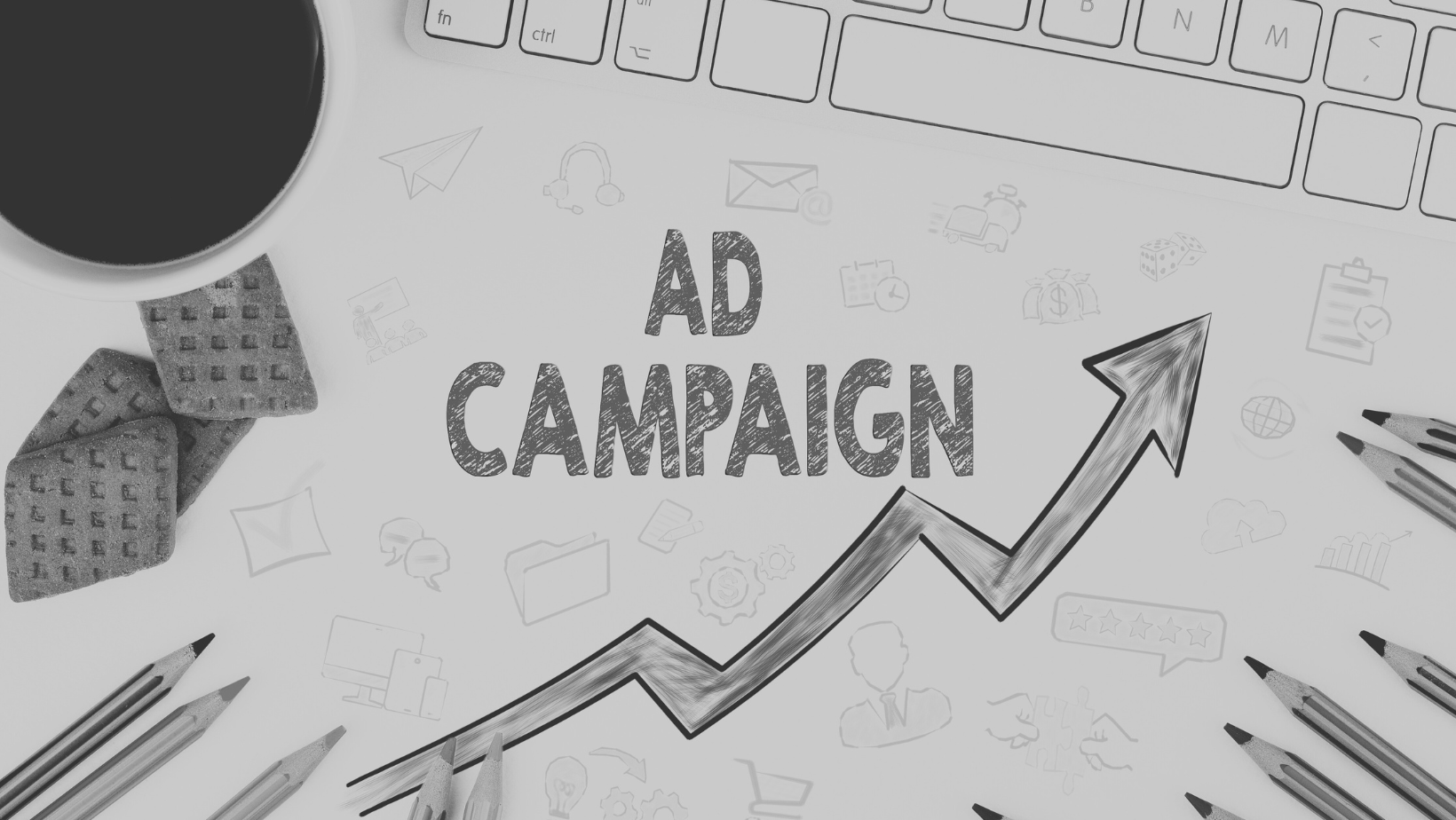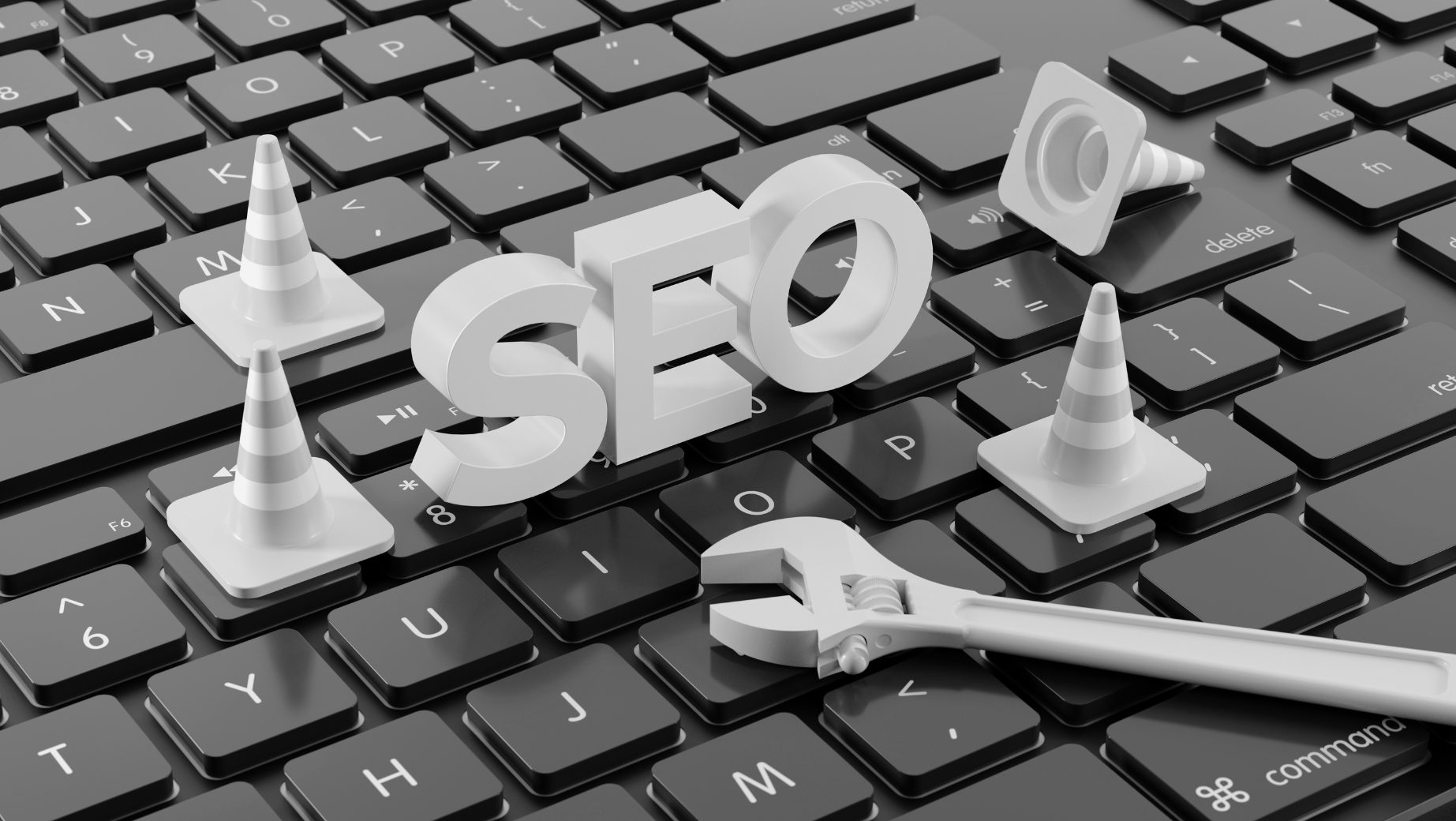Creating a successful paid ads campaign can be a daunting task, but when executed correctly, it can yield an impressive return on investment (ROI). In this comprehensive guide, we'll explore the intricacies of paid advertising, offer practical strategies to maximize ROI, and walk you through the steps to create a winning paid ad campaign.
What Is Paid Advertising?
Companies pay for advertising to display ads on various digital platforms to reach their target audience. Unlike organic methods, paid ads can guarantee visibility and are a key paid marketing strategy in digital marketing to drive traffic, generate leads, and increase sales. This form of advertising encompasses several formats, each with unique benefits and applications.
What Are the Types of Paid Ads?
1. Paid Search: These are ads that appear on search engine results pages. Google Ads is a prime example of what is paid media, where advertisers bid on keywords to display their ads to users actively searching for related terms.

2. Social Media Advertising: Platforms like Facebook, Instagram, and LinkedIn offer extensive ad services. These paid advertising examples can be highly targeted based on user demographics, interests, and behaviors.

3. Banner Ads: These are visual ads displayed on websites, often at the top or sides of a web page. They're great for brand awareness and can be targeted based on the website's audience.

4. Native Ads: These ads match the look and feel of the content around them. They're less intrusive and can be found in social media feeds or as recommended content on web pages.

6 Tips on How to Maximize ROI on Paid Ads
#1 Stop Looking for New Shiny Things, Just Learn What Works
When trying to stay competitive in digital marketing, it's easy to get caught up in the latest trends and tools. However, the key to creating a winning paid ads campaign often lies in focusing on what has already been proven to work. This is where building a swipe file becomes invaluable.
The Importance of a Swipe File
A swipe file is a collection of successful ad examples that marketers use for inspiration and learning. It’s a tried and true method for understanding what works in the industry. By analyzing these examples, you can uncover patterns, strategies, and techniques that are effective in your niche or market.
Why Focus on Proven Strategies
Chasing new trends can be a gamble. While innovation is important, it's equally crucial to base your strategies on methods that have been tested and proven. This approach saves time and resources and significantly increases the likelihood of your campaign’s success.
Creating and Utilizing a Swipe File
- Start Collecting: Whenever you come across an ad that catches your attention—whether it’s because of its compelling copy, striking visuals, or overall effectiveness—add it to your swipe file. Tools like Pinterest or a simple folder on your computer can serve as a good starting point.
- Analyze and Learn: Regularly review the ads in your swipe file. Look for common themes, messaging strategies, design elements, and call-to-actions (CTAs) that resonate with audiences. Take notes on what aspects you find most compelling.
- Utilize Tools Like FB Ads Library: Facebook Ads Library is a public database where you can view all active and inactive ads across Facebook products. This tool is especially useful for seeing how your competitors and other successful businesses craft ads. You can search by brand, topic, or keywords to find relevant examples.
- Apply Insights to Your Campaigns: Use the insights gained from your swipe file to inform your ad creation and optimization. If you notice that a certain type of headline or image style is frequently used in successful ads, consider how you can incorporate similar elements in your own campaigns.
- Keep It Updated: Digital marketing trends can shift quickly, so it’s important to continually update your swipe file with new and successful ads. This ensures that your strategies remain relevant and effective.
Swipe File Best Practices
- Diversify Your Collection: Include a variety of ads—different industries, platforms, and formats—to broaden your understanding of what works.
- Organize Your Swipe File: Categorize the ads based on different criteria like ad format, platform, or campaign goal to make it easy to find what you’re looking for.
- Stay Ethical: Remember, a swipe file is for inspiration and learning, not for direct copying. Always use the insights you gain to create original content.
By focusing on proven strategies and building a comprehensive swipe file, you can create more effective paid ad campaigns that resonate with your audience and maximize your ROI. This methodical approach to ad creation helps you cut through the noise and focus on what truly works in digital advertising.
#2 Utilize Analytics to Track Your Paid Advertising Performance
Consider these benefits of analyzing and tracking paid ads:
- Informed Decision Making: Analytics provide concrete data that can guide your advertising decisions, helping you to invest more in what works and adjust what doesn’t.
- Performance Tracking: Real-time tracking lets you see how your ads perform at any given moment, enabling quick adjustments to enhance their effectiveness.
- ROI Measurement: Understanding your return on investment (ROI) is crucial. Analytics help calculate the ROI, ensuring that your spending translates into tangible results.
- Audience Insights: Analytics can reveal detailed information about your audience, such as demographics, behaviors, and preferences, helping you to tailor your ads more effectively.
Key Metrics to Monitor
- Impressions: This metric indicates how many times your ad was displayed. It’s a good measure of the reach of your ad, but it doesn’t indicate engagement.
- Clicks: The number of clicks your ad receives indicates how engaging your ad is. More clicks usually mean your ad is relevant and appealing to your audience.
- Conversions: This is perhaps the most critical metric. It measures the number of people who took the desired action after clicking your ad, like making a purchase or signing up for a newsletter.
- Return on Ad Spend (ROAS): ROAS measures the effectiveness of your ad campaign in terms of revenue generated for every dollar spent. It’s calculated by dividing the revenue generated from the ad by the cost of the ad.
Interpreting the Data
When analyzing your advertising metrics, it's crucial to understand the context of the data. For instance, high impressions and low clicks might suggest your ad isn't engaging enough to prompt user interaction. Always benchmark these metrics against the specific goals of your campaign. If brand awareness is your target, high impressions are favorable, but if you aim for sales conversions, the conversion rate becomes your most critical metric.
It's also important to identify trends in your data over time. Analyzing when and on which days your ads perform best can help optimize your ad scheduling for maximum impact. Additionally, segmenting your data by demographics, location, or device type can provide deeper insights into your audience's preferences and behaviors, allowing for more targeted and effective ad strategies.
Using Data to Optimize Campaigns
In optimizing your paid advertising strategy, consider adjusting your targeting to favor demographics or locations with better performance. This may involve reallocating your budget to focus more on these high-performing areas. Further, refine your ad content by using click-through rates as a benchmark to test different ad creatives. Continuously improve your ads by tailoring the style, message, and call-to-action to what resonates most with your audience.
Additionally, evaluate the performance of your ads across different platforms. If certain platforms yield better results than others, consider shifting your budget to these more successful platforms. Lastly, optimize conversion rate by adjusting elements like your landing pages, ad copy, and calls-to-action to better meet your audience’s expectations and needs, ultimately driving more conversions.
#3 Leverage Lookalike Audiences for Targeted Marketing
Leveraging lookalike audiences is a potent strategy in paid advertising, particularly for reaching potential customers who share characteristics similar to your current audience. This approach utilizes existing customer data to find new people likely to be interested in your products or services.
Understanding Lookalike Audiences
A lookalike audience is a group created by advertising platforms like Facebook that mirrors your existing audience’s characteristics. This method uses algorithms to analyze your source audience's traits, including demographics, interests, and behaviors and then finds new users with similar profiles.
Tips for Effective Use of Lookalike Audiences
- Selecting the Right Source Audience: Your source audience, the group used to create the lookalike audience, should be of high quality. This could be your most loyal customers, highest spenders, or those who frequently engage with your content. The better the source audience, the more effective your lookalike audience will be.
- Setting Appropriate Audience Size: While creating a lookalike audience, you can choose its size relative to the population of the targeted location. Smaller audiences more closely match your source audience, but larger ones increase your reach. It’s a balance between similarity and scale.
- Refining Targeting Criteria: Besides lookalike features, incorporate additional targeting criteria such as geographic location or specific interests to fine-tune your audience.
Real-Life Success Stories
Many businesses have seen remarkable results with lookalike audiences. For instance, an e-commerce brand targeting a lookalike audience based on its high-value customers saw a significant increase in conversion rates and a decrease in cost per acquisition. Similarly, a tech company used lookalike audiences to reach users similar to their top app users, resulting in increased app installations and user engagement.
These examples illustrate that when you target people similar to your best customers, your ads become more relevant and effective. The use of lookalike audiences is not just about expanding your reach but doing so in a way that closely aligns with your proven audience segments. This targeted approach leads to better campaign performance and a higher return on your advertising spend.
#4 Capture Your Competitor's Customers through Branded Keywords

One effective strategy is to leverage branded keywords in your paid advertising campaigns. This approach involves bidding on keywords associated with your competitors' brands, enabling you to capture the attention of potential customers searching for similar products or services.
The Importance of Identifying Competitor Brands and Keywords
To successfully implement this strategy, identify your competitors and the keywords associated with their brands. This involves understanding the market and recognizing the terms and phrases customers commonly use when searching for your competitors' products or services. These keywords are valuable as they represent users with a high intent to purchase or engage.
Conducting Keyword Research
- Use Keyword Research Tools: Tools like Google Keyword Planner or SEMrush can help identify which branded keywords your competitors are ranking for.
- Analyze Competitor Websites and Ads: Look at the language and keywords your competitors use in their marketing materials and websites.
- Consider Long-Tail Keywords: These are longer, more specific phrases that may have lower search volumes but higher conversion rates due to their specificity.
Selecting the Right Branded Keywords
Choose highly relevant keywords for your industry and have a significant search volume. However, be mindful of your region's legality and ethical considerations when bidding on competitor brand names.
Creating Compelling Ad Copy
Your ad copy should clearly differentiate your offerings from your competitors. Highlight unique selling points, special offers, or advantages that set your brand apart. The goal is to provide a compelling reason for users to choose your services over your competitors.
Benefits and Strategies for Maximizing Visibility and Conversions
- Increased Visibility: By appearing in searches for your competitors, you increase your brand's visibility to a highly targeted audience.
- Higher Conversion Potential: Users searching for specific brands are often further along in the buying process and are more likely to convert.
- Cost-Effective: Bidding on competitor keywords can be more cost-effective than more generic high-competition keywords.
For instance, a new coffee shop could bid on keywords related to a well-established competitor in the same area. Creating ads that emphasize their unique blends or a cozy environment can attract coffee lovers who initially searched for the competitor but might be enticed by the new options.
#5 Create Targeted Campaigns for Every Stage of Your Marketing Funnel
Tailoring ad messaging and creative content to align with each stage of the customer's journey is crucial in developing effective marketing campaigns. This approach acknowledges that consumers have different needs and mindsets at various marketing funnel stages, from initial awareness to the final decision to purchase.
In the early stages of the customer journey, where awareness is the goal, your ad content should focus on introducing your brand and its values. The messaging at this stage is more about education and engagement rather than pushing for a sale. These ads should be designed to spark interest and curiosity about your brand, possibly addressing a common problem or need but not necessarily promoting a specific product.
Customers actively seek solutions to their needs or problems as they move into the consideration stage. Here, your ads should start to be more specific, showcasing your products or services as potential solutions. This is the stage to highlight unique features, benefits, and any competitive advantages your offerings might have.
Finally, in the decision stage of the funnel, your audience is ready to make a purchase but might need a final nudge. At this point, ads should be highly targeted with clear calls to action (CTAs). This could include special offers, product demos, customer testimonials, or detailed product information to help the consumer make their final decision.
By aligning your ad content with the stage of awareness in your marketing funnel, you ensure that your messaging is relevant and effective, meeting your potential customers exactly where they are in their buying journey. This targeted approach not only increases the chance of converting prospects into customers but also helps in building a more personalized relationship with your audience.
#6 Enhance Results by A/B Testing Every Campaign
A/B testing, also known as split testing, is a methodical process used to optimize various elements of advertising campaigns. It involves comparing two versions of an ad to see which one performs better. This comparison is based on a single varying element, while other factors remain constant, allowing marketers to pinpoint exactly what drives better results.
In A/B testing, 'Version A' might be your current ad, while 'Version B' includes a change in one key element—be it the headline, visual, ad copy, or call to action (CTA). By exposing these two versions to a similar audience segment over the same period, you can gather data on their performance.
How A/B Testing Optimizes Ad Elements
- Headlines: Testing different headlines can reveal what language or phrasing most appeals to your audience. Does a question work better than a statement? Is a clear value proposition more effective than a creative play on words?
- Visuals: Changing an image or graphic can significantly impact an ad's engagement. A/B testing helps determine which visuals capture attention and convey your message more effectively.
- Ad Copy: The body text of your ad is crucial for conveying your message. Testing variations can show whether a concise copy outperforms a more detailed explanation or if certain key phrases resonate more with your audience.
- CTAs: The call to action is where you prompt your audience to take a step. A/B testing different CTAs can uncover what language or button design leads to more clicks and conversions.
Importance of A/B Testing
A/B testing is essential for improving the effectiveness of your advertising campaigns. It provides empirical data that takes the guesswork out of ad optimization, allowing for more informed decisions. This data-driven approach ensures that every element of your ad is fine-tuned to resonate with your audience, ultimately leading to higher engagement, click-through rates, and conversions.
Moreover, regular A/B testing fosters a culture of continuous improvement in your advertising strategies. By consistently refining your ads based on real user data, you can stay ahead of changing consumer preferences and market trends, keeping your campaigns fresh and relevant.
7 Steps on How to Create a Winning Paid Ad?
1. Set Your Goal and Your KPI
Define clear, measurable objectives for your campaign. Setting specific goals and KPIs helps in tracking progress and measuring success.
2. Clearly Define the Audience You Want to Target
Understanding your audience's demographics, interests, and behaviors is key. A well-defined target audience leads to more effective ad targeting.
3. Choose the Correct Platform for Ads
Selecting the right platform is crucial. Consider your audience and the type of product or service you're offering. Utilize tools like benchmarking and keyword research to make informed decisions.
4. Produce the Copy for Your Ad
Craft compelling ad copy with attention-grabbing headlines, persuasive messaging, and a strong call to action. Your copy should resonate with your target audience and clearly convey your offer.
5. Create a Landing Page According to the Customer's Journey
Your landing page should align with the customer's stage in the buying journey. It should be well-designed, with a clear message and call to action that matches the ad.
6. Set Up the Targeting Options for Your Audience
Utilize the various targeting options available to narrow down your audience. This can include targeting based on demographics, interests, behaviors, and geographic locations.
7. Reuse Your Highly Engaging Content
Leverage your best-performing organic content for paid campaigns. This can enhance engagement and improve campaign performance.
Let Loupe & Blade Help Increase ROI with Paid Ads in Your Business
Paid advertising, when done right, can significantly boost your business's online presence and ROI. Let Loupe & Blade be your guide in the world of paid advertising. With our extensive experience and deep understanding of various ad types, analytics, and lookalike audience strategies, we're perfectly positioned to boost your digital marketing efforts.
Our expertise in SEO is our superpower in helping brands like yours get smarter and more effective in their online strategies. We're committed to long-term partnerships, working closely with you to enhance your SEO and celebrating the successes together. Explore our services and start your journey to greater online success with Loupe & Blade.



